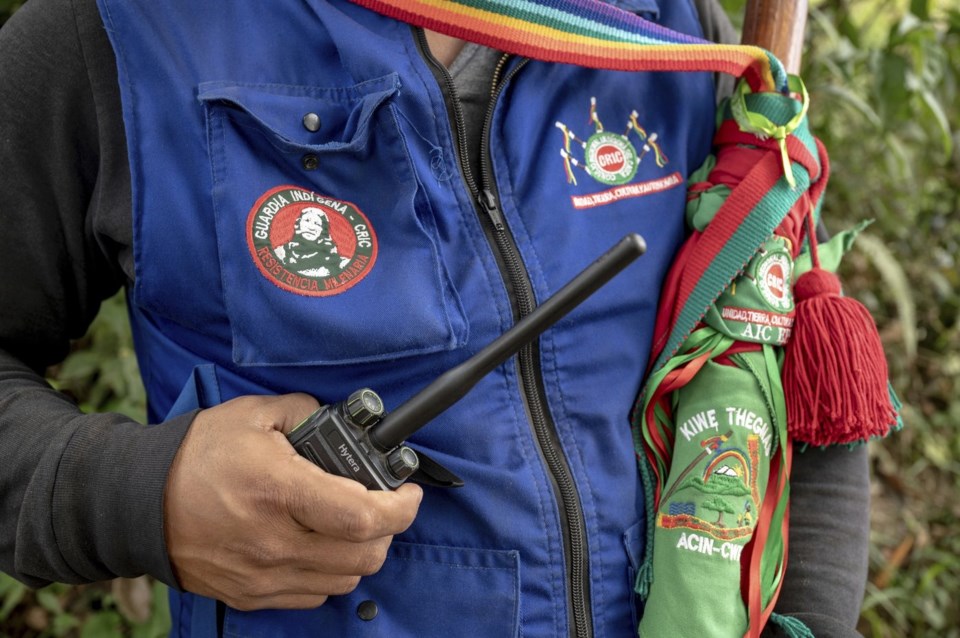CALDONO, Colombia (AP) — When the armed groups that operate in Colombia's drug trade need new recruits, they are increasingly turning to the children of the regions where they are active. Confronting the problem often falls to Indigenous groups, who blame the government for doing too little to stop it.
In Cauca, an impoverished department in southwest Colombia, a coalition of Indigenous groups has documented more than 900 cases of Indigenous youth recruited since 2016, including some as young as 9. And the groups say the pace of recruiting has quickened as armed groups have expanded crops like the coca that is used to make cocaine.
Here are takeaways from The Associated Press' reporting on the child recruitment:
Colombia's violent past is not past
Colombia has endured more than half a century of internal conflict that continues today. Leftist guerrillas, right-wing paramilitaries and criminal groups have fought for control of territory. A 2016 peace deal ended the war with the country’s largest rebel group, the Revolutionary Armed Forces of Colombia, or FARC, but violence never fully stopped.
FARC dissident groups rejected the peace process. The ELN, a Marxist guerrilla force active since the 1960s, and the Clan del Golfo, Colombia’s largest drug-trafficking gang, are also active. All the groups recruit children.
Where the dissidents are active, residents complain that they control everything. A schoolteacher at a village near Caldono, surrounded by dense forest and coca fields planted and patrolled by armed groups, said their presence in and around the school is constant. She described several former students, some as young as 11, now in the groups.
One group confronting the recruiting
The Indigenous Guard of the Nasa people formed in 2001 to protect Indigenous territories from armed groups and environmental destruction such as deforestation and illegal mining. Since 2020, they've seen armed groups amp up their recruiting of children to coincide with the guerrillas' expanded operations in growing drugs like coca.
Guard members have stepped up patrols at schools like the one near Caldono to try to discourage recruiting. But they have also undertaken rescue missions to bring back children.
One Guard member, 39-year-old Patricia Elago Zetty, told the AP of trekking across mountainous terrain when her own 13-year-old son went missing three years ago to confront the guerrillas suspected of taking her boy and another teenager. She said she and her unarmed comrades were stopped at gunpoint and spent tense moments before the boys were returned to them.
But not all such missions are successful, with some groups refusing to return recruits above a certain age.
What is the government doing?
Scott Campbell, the United Nations human rights chief in Colombia, said the government's response has been “ineffective and untimely.” He noted a lack of consistent state presence and failure to partner with Indigenous authorities on prevention.
The Indigenous Councils Association of Northern Cauca, or ACIN, said the government has left armed groups to fill the void by providing roads, food and other basic services in remote and neglected areas.
Colombia’s Family Welfare Institute, or ICBF — the main agency protecting children — said it funds community programs and Indigenous‑led initiatives that have contributed to 251 children leaving armed groups in the first half of 2025. The ICBF insists it is working with Indigenous authorities and pressing armed groups to uphold a ban on recruiting minors.
A recruit who fled and now tries to stop others from going
One young woman who recently fled FARC dissidents, speaking on condition of anonymity for fear of retaliation, said she joined the armed group at 16 not because she was forced but to escape family problems.
She said she mainly cooked, organized supplies and cleaned weapons. She was afraid at first but was not mistreated. She eventually fled after a change in commanders left her fearing harsher treatment, or being moved to a faraway region with an increased threat of combat.
Now she works with a local initiative that supports families trying to prevent their children from being recruited. She warns teens about the risks of joining armed groups.
As for the parents, she said: “I tell families they need to build trust with their children."
___
The Associated Press’ climate and environmental coverage receives financial support from multiple private foundations. AP is solely responsible for all content. Find AP’s standards for working with philanthropies, a list of supporters and funded coverage areas at AP.org.
Steven Grattan, The Associated Press



